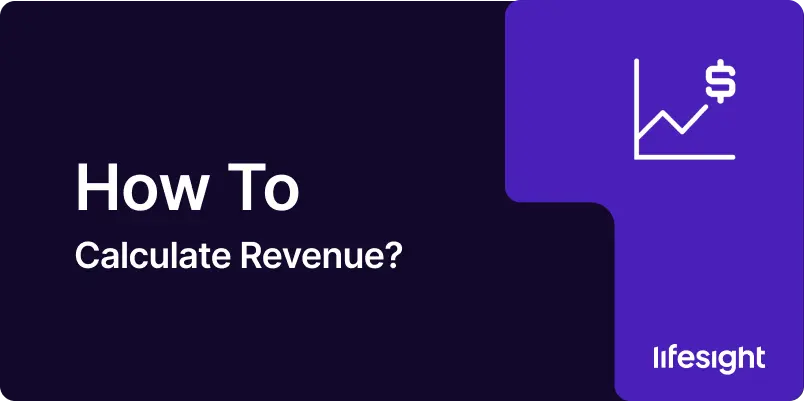
In the dynamic world of business and finance, revenue stands as a fundamental metric that drives decision-making, shapes strategies, and indicates a company’s financial health. Whether you’re a startup founder, a seasoned CFO, or an aspiring business analyst, understanding how to calculate and interpret revenue is crucial for navigating the complexities of modern business. This guide will walk you through the ins and outs of revenue calculation, from basic principles to advanced strategies, empowering you to leverage this vital metric in your professional endeavors.
What is Revenue?
Before we dive into calculations, let’s establish a clear definition of revenue:
Revenue, often referred to as the “top line,” is the total amount of income generated by a company from its primary business activities before any expenses or costs are deducted. It represents the raw inflow of economic benefits during a period arising from the ordinary activities of a business.
For business professionals and financial analysts, understanding revenue is crucial because:
- It’s the starting point for all profit calculations
- It indicates market demand for a company’s products or services
- It’s a key component in many financial ratios and valuation metrics
- It provides insights into a company’s growth trajectory
- It’s often used as a benchmark for comparing companies within an industry
The Basic Formula for Calculating Revenue
At its most basic, the formula for calculating revenue is:
Revenue = Price of Goods or Services x Quantity Sold
However, this simple formula can quickly become more complex depending on the nature and scale of the business.
Step-by-Step Guide to Calculating Revenue
Let’s break down the process of calculating revenue with a practical example:
Step 1: Define Your Calculation Period
First, determine the timeframe for which you’re calculating revenue. Common periods include:
- Daily
- Weekly
- Monthly
- Quarterly
- Annually
For this example, let’s use monthly data.
Step 2: Identify All Revenue Streams
List all the ways your company generates income from its primary business activities. This might include:
- Product sales
- Service fees
- Subscription revenue
- Licensing fees
- Royalties
Let’s say you run an e-commerce business with three main revenue streams:
- Physical product sales
- Digital product downloads
- Affiliate commissions
Step 3: Gather Sales Data for Each Revenue Stream
Collect data on the quantity sold and price for each revenue stream:
- Physical products: 1,000 units sold at an average price of $50
- Digital downloads: 500 units sold at $20 each
- Affiliate commissions: 100 referrals generating $30 commission each
Step 4: Calculate Revenue for Each Stream
Now, let’s apply our formula to each revenue stream:
Physical products: 1,000 x $50 = $50,000 Digital downloads: 500 x $20 = $10,000 Affiliate commissions: 100 x $30 = $3,000
Step 5: Sum Up Total Revenue
Add up the revenue from all streams:
Total Revenue = $50,000 + $10,000 + $3,000 = $63,000
This means your total revenue for the month is $63,000.
Real-World Considerations in Revenue Calculations
While the basic calculation is straightforward, real-world scenarios often introduce complexities:
1. Variable Pricing
If your product or service prices fluctuate (e.g., due to dynamic pricing or customized quotes), you’ll need to account for these variations:
Revenue = Σ (Price of Each Sale x Quantity Sold in Each Sale)
2. Discounts and Promotions
Account for any discounts or promotional pricing:
Revenue = Σ ((Regular Price – Discount) x Quantity Sold)
3. Returns and Refunds
Subtract the value of returns and refunds to get net revenue:
Net Revenue = Gross Revenue – Returns and Refunds
4. Deferred Revenue
For businesses that receive payment before delivering goods or services (e.g., subscriptions or pre-orders), you’ll need to consider deferred revenue:
Recognized Revenue = Total Payments Received – Deferred Revenue
5. Multi-Currency Transactions
If you operate internationally, ensure all transactions are converted to a single currency using appropriate exchange rates.
Advanced Considerations in Revenue Analysis
As you become more proficient with basic revenue calculations, consider these advanced concepts:
1. Revenue Recognition Principles
Familiarize yourself with accounting standards like ASC 606 (IFRS 15 internationally) which govern when and how revenue should be recognized. These principles ensure that revenue is recognized when the performance obligation is satisfied, which may not always align with when cash is received.
2. Segmented Revenue Analysis
Break down your revenue by different segments to gain deeper insights:
- Product lines or service types
- Geographic regions
- Customer segments (e.g., B2B vs. B2C)
- Sales channels (e.g., online vs. in-store)
3. Revenue per Customer
Calculate the average revenue generated by each customer:
Revenue per Customer = Total Revenue / Number of Customers
This metric can help in customer valuation and targeting strategies.
4. Recurring vs. Non-Recurring Revenue
For businesses with both one-time and recurring revenue streams, separate these for analysis:
Recurring Revenue Percentage = (Recurring Revenue / Total Revenue) x 100
A higher percentage of recurring revenue often indicates more stable and predictable income.
5. Seasonality Adjustments
If your business experiences seasonal fluctuations, consider using techniques like:
- Year-over-year comparisons
- Moving averages
- Seasonal decomposition
These methods can help you identify underlying trends separate from seasonal effects.
Common Pitfalls to Avoid
When calculating revenue, be wary of these common mistakes:
- Including Non-Operating Income: Revenue should only include income from primary business activities. Don’t include investment gains, asset sales, or other non-core income.
- Miscategorizing Contra-Revenue Items: Items like sales discounts or allowances should be subtracted from gross revenue, not treated as expenses.
- Ignoring the Time Value of Money: For long-term contracts or financing arrangements, consider the present value of future revenue streams.
- Overstating Revenue Through Channel Stuffing: Be cautious of artificially inflating sales by pushing excess inventory to distributors or retailers.
- Neglecting to Match Revenue with Related Expenses: Ensure you’re recognizing revenue in the same period as the associated costs of goods sold or service delivery expenses.
Tools for Revenue Analysis
Several tools can assist you in calculating and analyzing revenue:
- Accounting Software: QuickBooks, Xero, or NetSuite can automate much of the revenue calculation process.
- ERP Systems: SAP, Oracle, or Microsoft Dynamics offer comprehensive revenue management and analysis features.
- Business Intelligence Tools: Tableau, Power BI, or Looker can help create dynamic visualizations of revenue data.
- Spreadsheet Software: Excel or Google Sheets remain powerful tools for custom revenue calculations and analysis.
- Revenue Operations Platforms: Tools like Clari or InsightSquared provide advanced revenue analytics and forecasting capabilities.
Leveraging Revenue Data in Your Business Strategy
Understanding and effectively using revenue data can significantly enhance your decision-making processes. Here’s how you can leverage this metric:
- Performance Evaluation: Use revenue trends to assess the overall health of your business and the success of specific initiatives.
- Goal Setting: Set realistic revenue targets based on historical data, market conditions, and growth strategies.
- Resource Allocation: Invest more in high-revenue products, services, or markets.
- Pricing Strategy: Analyze how changes in pricing affect overall revenue and profitability.
- Market Expansion: Identify high-potential markets or segments for growth based on revenue performance.
- Forecasting: Use revenue trends to project future performance and inform strategic planning.
- Competitive Analysis: Benchmark your revenue performance against competitors to gauge market position.
Conclusion
Revenue is more than just a number on a financial statement, it’s a powerful tool that can drive strategic decision-making and fuel business growth. By mastering the calculation and interpretation of revenue, you equip yourself with essential insights into your company’s performance, market position, and growth potential.
Remember, while revenue is a critical metric, it should always be analyzed in context. Consider it alongside other financial indicators like profit margins, cash flow, and return on investment. The most successful businesses take a holistic view of their financial performance, using revenue as a starting point for deeper analysis and strategic planning.
As you continue to refine your approach to calculating and leveraging revenue data, you’ll develop a more nuanced understanding of your business’s dynamics and opportunities. This knowledge will empower you to make more informed decisions, optimize your operations, and ultimately drive sustainable growth for your company.
So, the next time you’re assessing your business performance, planning for the future, or making a case for strategic investment, remember to dive deep into your revenue data. It might just be the key to unlocking your next big business breakthrough!
Free essential resources for success
Discover more from Lifesight















